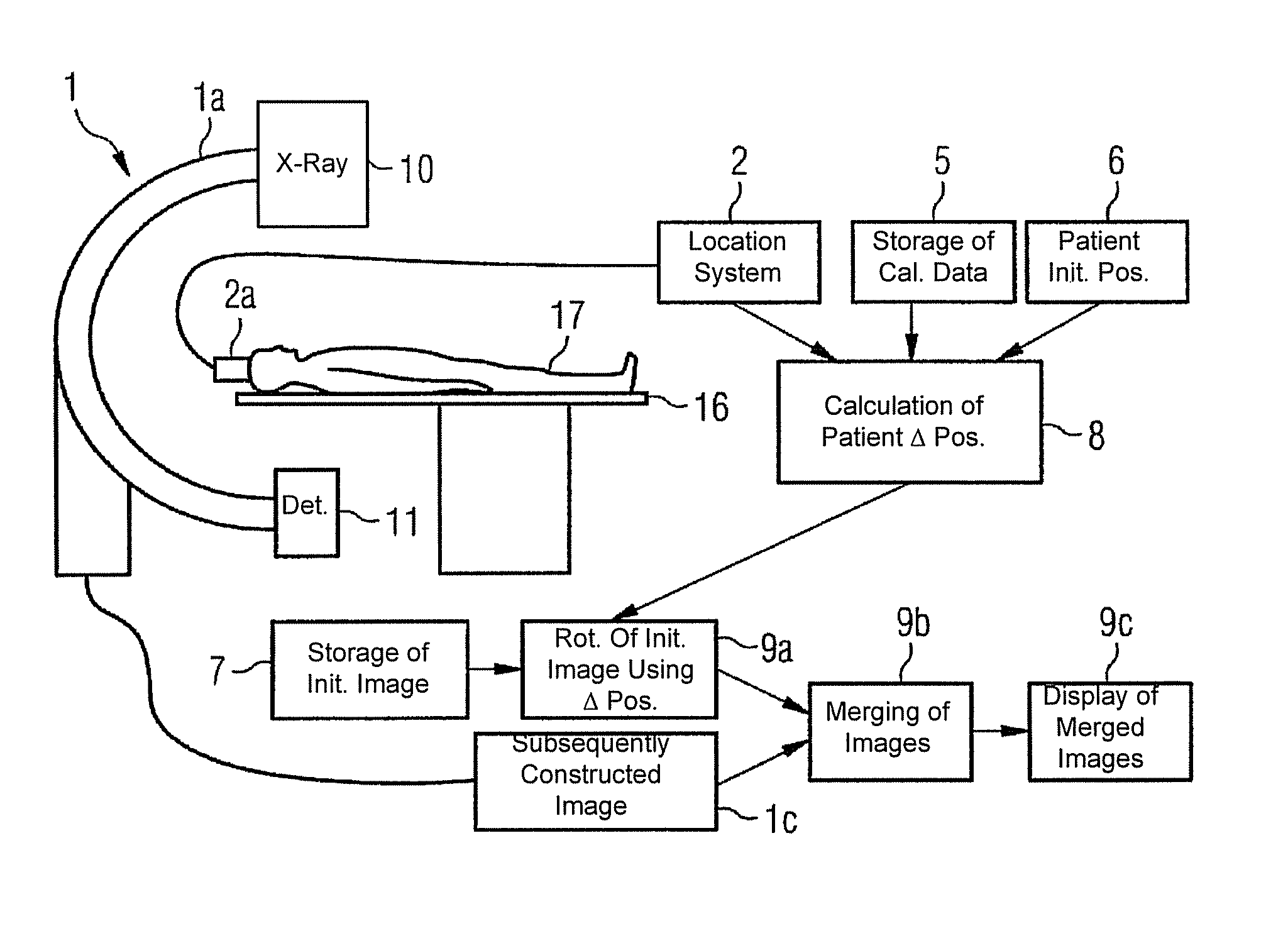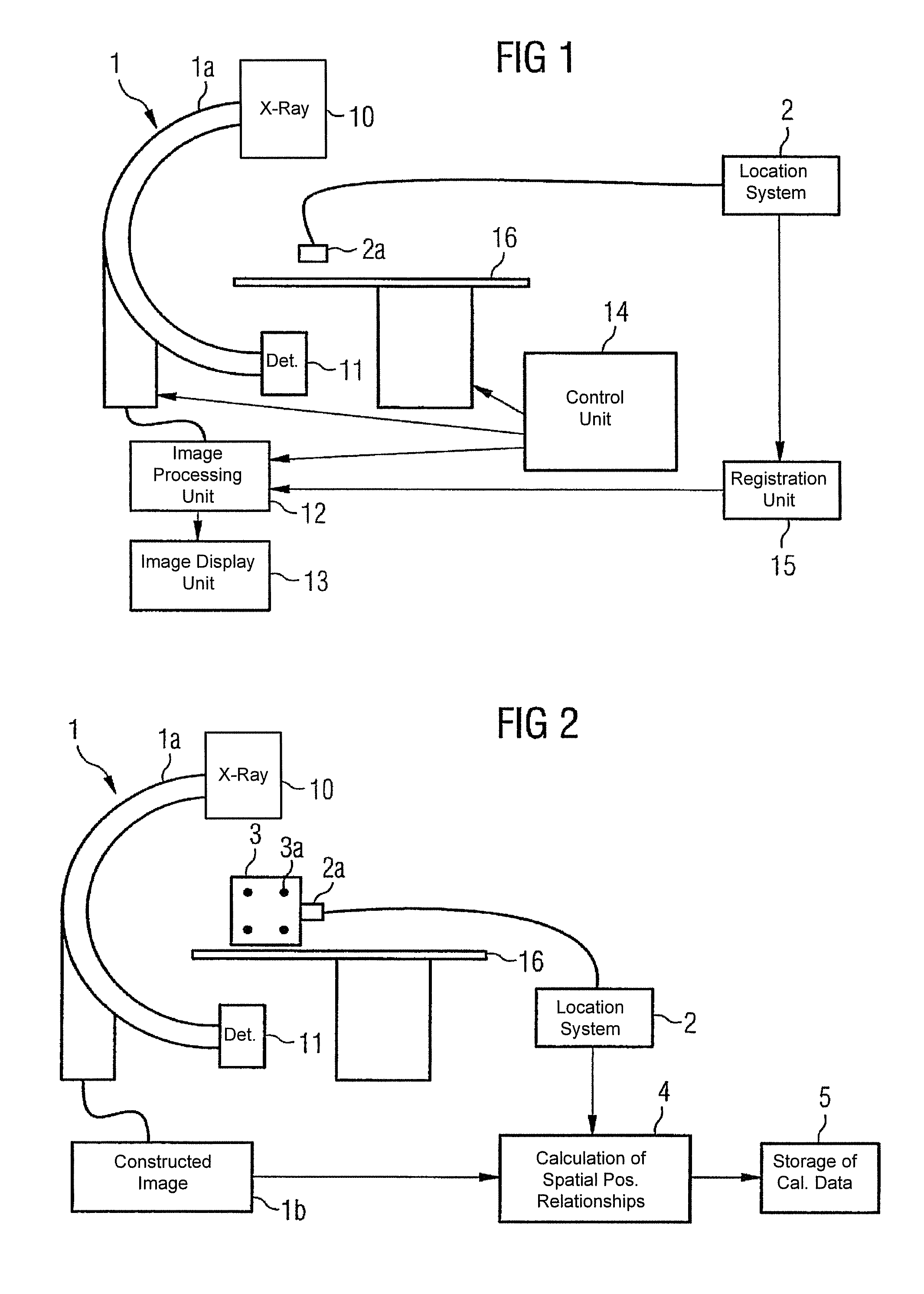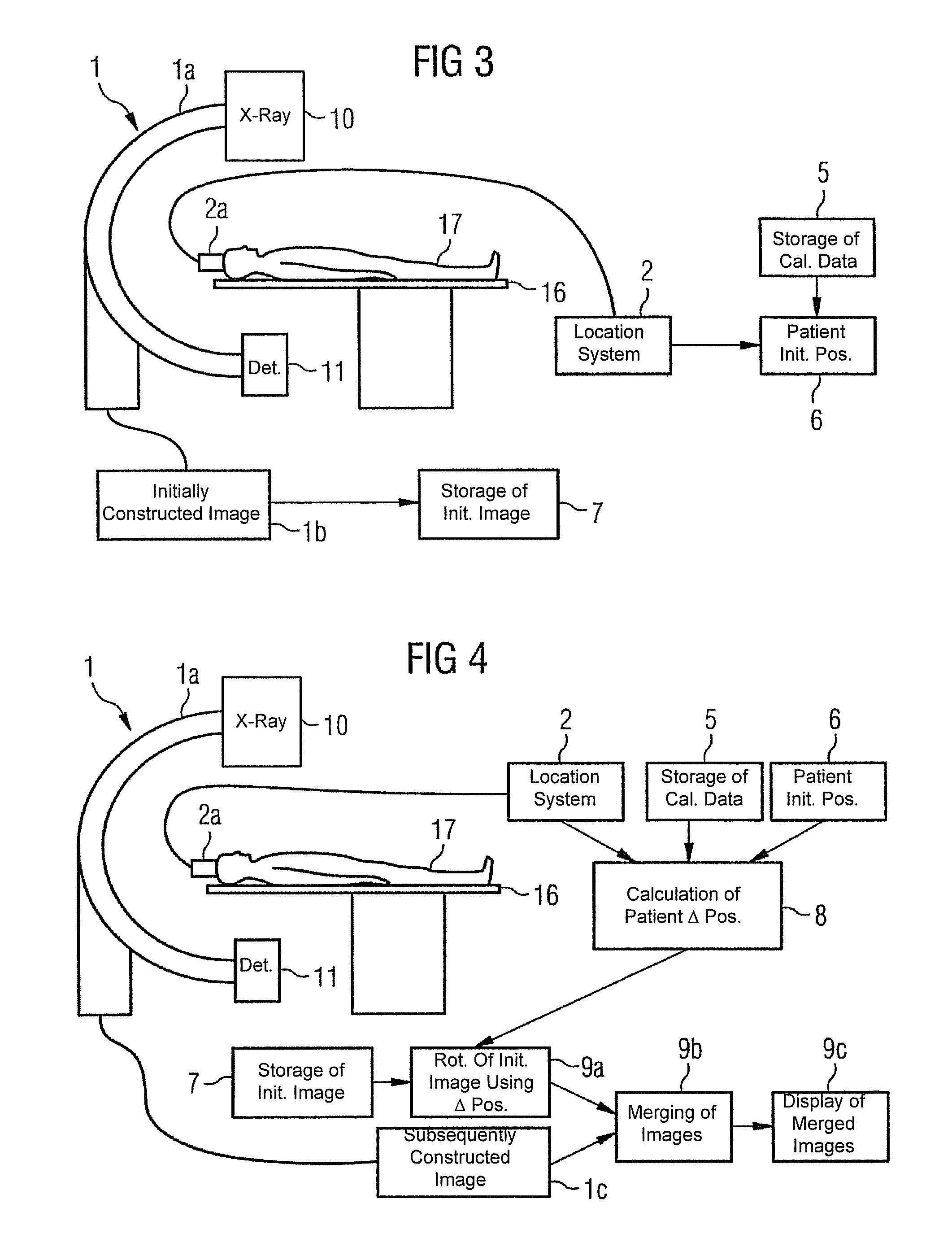Method for registering and merging medical image data
a technology of image data and registration, applied in the field of image data registration and superimposition, can solve the problems of increasing the difficulty of guiding the instrument accurately, the difficulty of accurately guiding and the complexity of the guidance of the catheter through the arterial system
- Summary
- Abstract
- Description
- Claims
- Application Information
AI Technical Summary
Benefits of technology
Problems solved by technology
Method used
Image
Examples
Embodiment Construction
[0024]The present method is hereafter described by means of an x-ray angiography unit for applications in neuroradiology. The method can of course be used in other areas of medical imaging in which serial radiographs are taken and sometimes have to be displayed superimposed with a previously constructed image data set.
[0025]For the radiographs an x-ray angiography unit 1 for neuroradiology is used, as shown in diagram form in FIG. 1. The x-ray angiography unit 1 consists inter alia of a C-arm 1a that is rotatable round two axes, to which are attached an x-ray tube 10 and a detector 11 opposite said x-ray tube, an image processing unit 12 and an image display unit 13. Said unit furthermore comprises the treatment table 16, a control unit 14 to control the taking of the radiographs and the registration unit 15. By rotating the C-arm 1a, various projections of the region being investigated can be constructed as two-dimensional images during the examination of the patient who is lying o...
PUM
 Login to View More
Login to View More Abstract
Description
Claims
Application Information
 Login to View More
Login to View More - R&D
- Intellectual Property
- Life Sciences
- Materials
- Tech Scout
- Unparalleled Data Quality
- Higher Quality Content
- 60% Fewer Hallucinations
Browse by: Latest US Patents, China's latest patents, Technical Efficacy Thesaurus, Application Domain, Technology Topic, Popular Technical Reports.
© 2025 PatSnap. All rights reserved.Legal|Privacy policy|Modern Slavery Act Transparency Statement|Sitemap|About US| Contact US: help@patsnap.com



